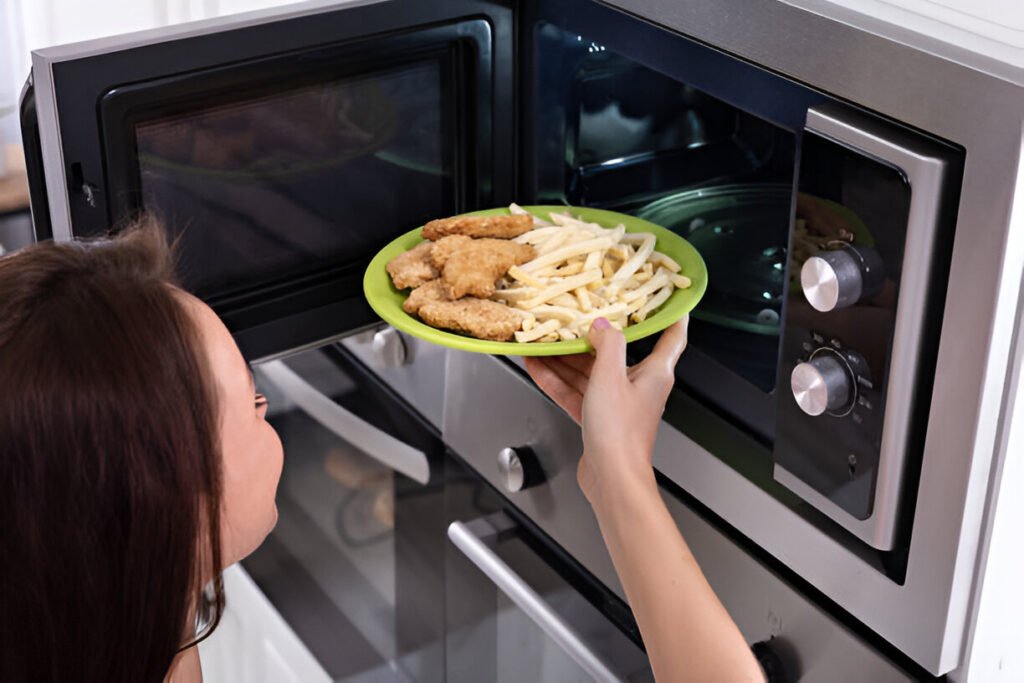Microwave ovens have become an essential part of modern kitchens, offering convenience and versatility. Whether you’re reheating leftovers, cooking a quick meal, or defrosting frozen items, a microwave oven can save you a lot of time. But with so many options available, how do you choose the right one for your needs? In this guide, we’ll break down the key factors to consider, making it easy for you to find the best microwave oven for your kitchen.

What Is a Microwave Oven?
A microwave oven is an appliance that uses electromagnetic waves to cook food. Unlike conventional ovens that heat food from the outside, microwaves penetrate food, cooking it from the inside out. This makes cooking fast and efficient, ideal for today’s busy lifestyles.
Types of Microwave Ovens
There are three main types of microwave ovens: countertop, over-the-range, and built-in.
- Countertop Microwaves: These are the most common and portable options, suitable for any kitchen.
- Over-the-Range Microwaves: These are installed above your stove, doubling as a vent and microwave.
- Built-in Microwaves: These are installed into cabinets for a sleek, integrated look.
Each type has its pros and cons, so consider the layout of your kitchen when making your choice.
Size and Capacity
Microwaves come in various sizes, typically measured in cubic feet. If you’re cooking for a family, a larger microwave with a capacity of 1.5 to 2.0 cubic feet is ideal. For individuals or couples, a smaller model (around 0.7 to 1.2 cubic feet) may suffice.
How much space do you need?
Think about where the microwave will sit. Do you have enough counter space for a larger model? If space is limited, a compact microwave might be the best choice.
Wattage: Power and Efficiency
Wattage determines how fast and efficiently a microwave cooks. Most microwaves range between 600 and 1200 watts. Higher wattage means faster cooking, but also more energy consumption.
- 600-800 watts: Suitable for reheating and basic cooking.
- 800-1000 watts: Great for cooking meals quickly.
- 1000+ watts: Ideal for larger families or those who use the microwave frequently for more complex meals.
Features and Functions
Modern microwaves come with a variety of features, making cooking more convenient and efficient. Some popular features include:
- Sensor Cooking: Automatically adjusts time and power for optimal cooking results.
- Convection Cooking: Combines the speed of microwaves with the even cooking of convection ovens.
- Grill Functions: Allows you to grill foods like a traditional oven.
- Defrost Options: Different settings for defrosting by weight or time.
Pre-Set Programs
Many microwaves come with pre-set programs that make cooking specific foods a breeze. Whether it’s popcorn, pizza, or vegetables, pre-set programs take the guesswork out of cooking.
Are pre-set programs worth it?
If you often cook the same types of food, pre-set programs can save you time. However, if you prefer more manual control, look for models with customizable settings.
Inverter Technology: What Is It?
Microwaves with inverter technology provide consistent power levels, unlike traditional microwaves that cycle between high and low power. This results in more even cooking and less overcooked edges. If you want precision cooking, consider a microwave with this feature.
Safety Features to Consider
Safety is a priority when selecting any kitchen appliance. Look for microwaves that include:
- Child Lock: Prevents the microwave from being operated accidentally by children.
- Auto Shut-Off: Turns off the microwave when cooking is complete.
- Overheat Protection: Prevents the microwave from overheating, adding an extra layer of safety.
Design and Aesthetics
Your microwave’s design should complement your kitchen’s decor. Consider color, finish (stainless steel is popular), and whether the microwave’s controls are intuitive and easy to use.
Price Range
Microwave ovens range from budget-friendly models under $100 to high-end options that can cost over $500. Generally, more expensive microwaves offer additional features like landersappliance convection cooking, inverter technology, and better design.
Energy Efficiency
Some microwaves are more energy-efficient than others. Look for models with an Energy Star rating to ensure you’re minimizing power consumption.
Why does energy efficiency matter?
An energy-efficient microwave not only helps reduce your electricity bill but also minimizes your environmental impact.
Installation and Placement
Where you place your microwave matters. Countertop microwaves are the easiest to install, but they take up space. Over-the-range models may require professional installation, but they save counter space and provide additional venting.
Maintenance and Care
Regular cleaning and proper maintenance will extend the life of your microwave. Wipe down the interior after each use to prevent buildup, and be sure to follow the manufacturer’s instructions for cleaning filters and other components.
